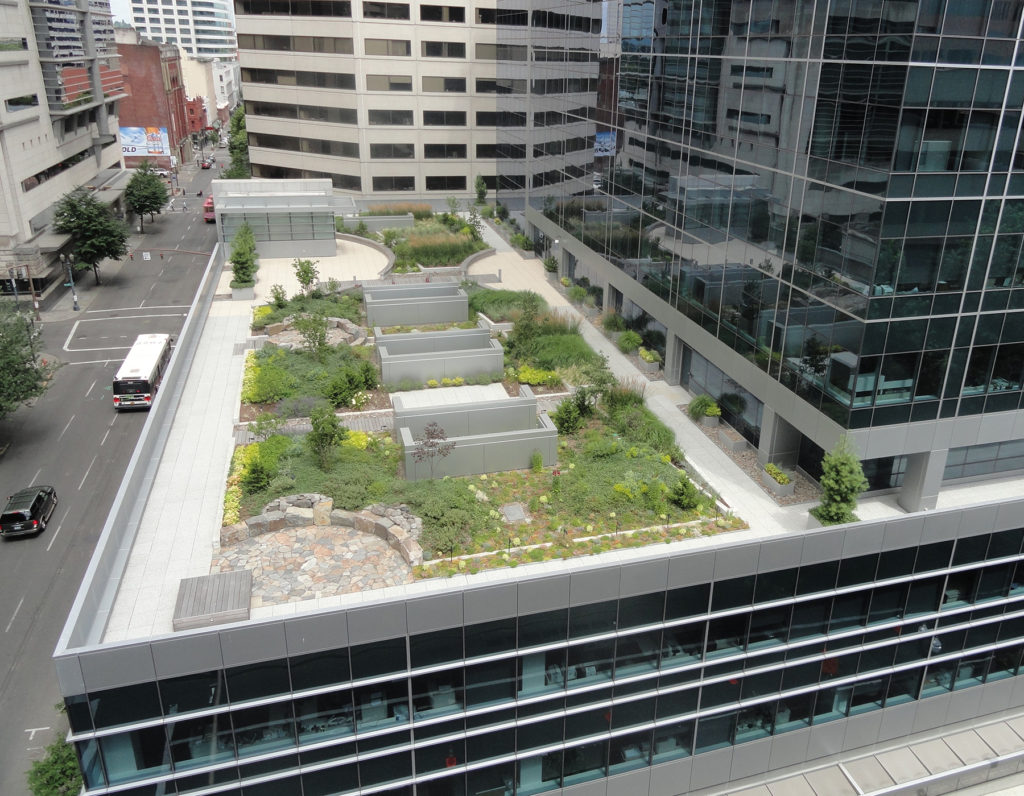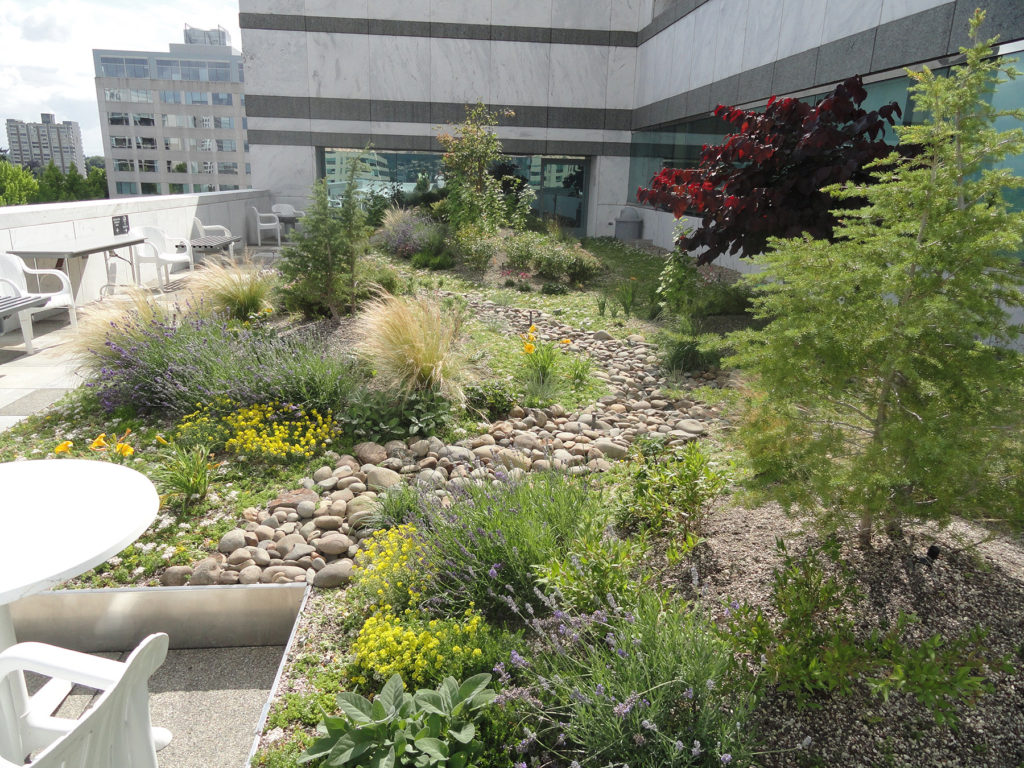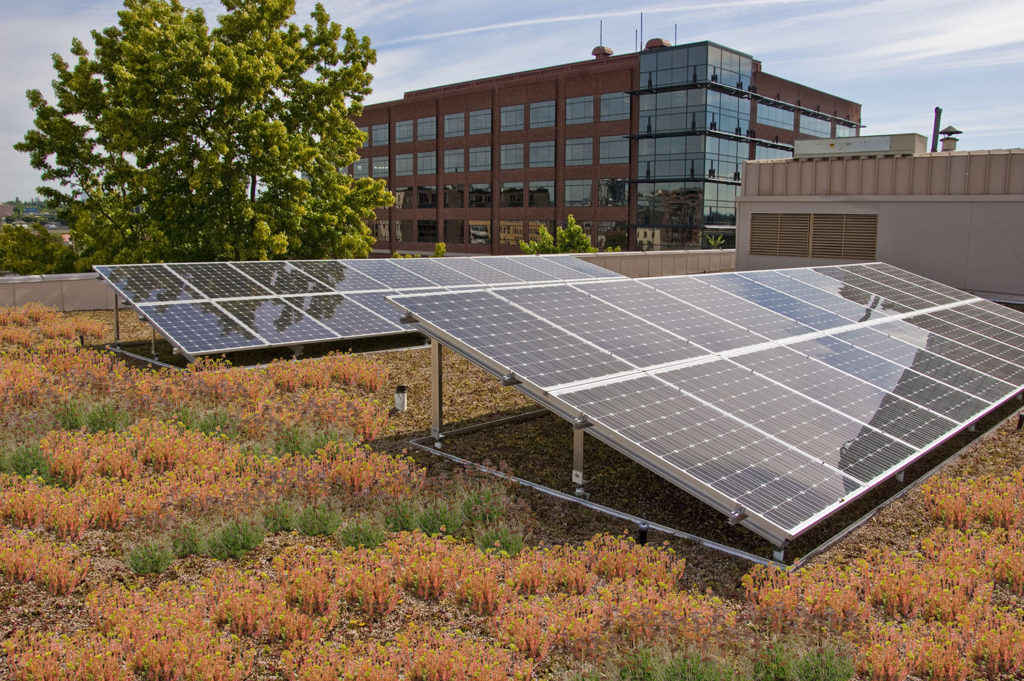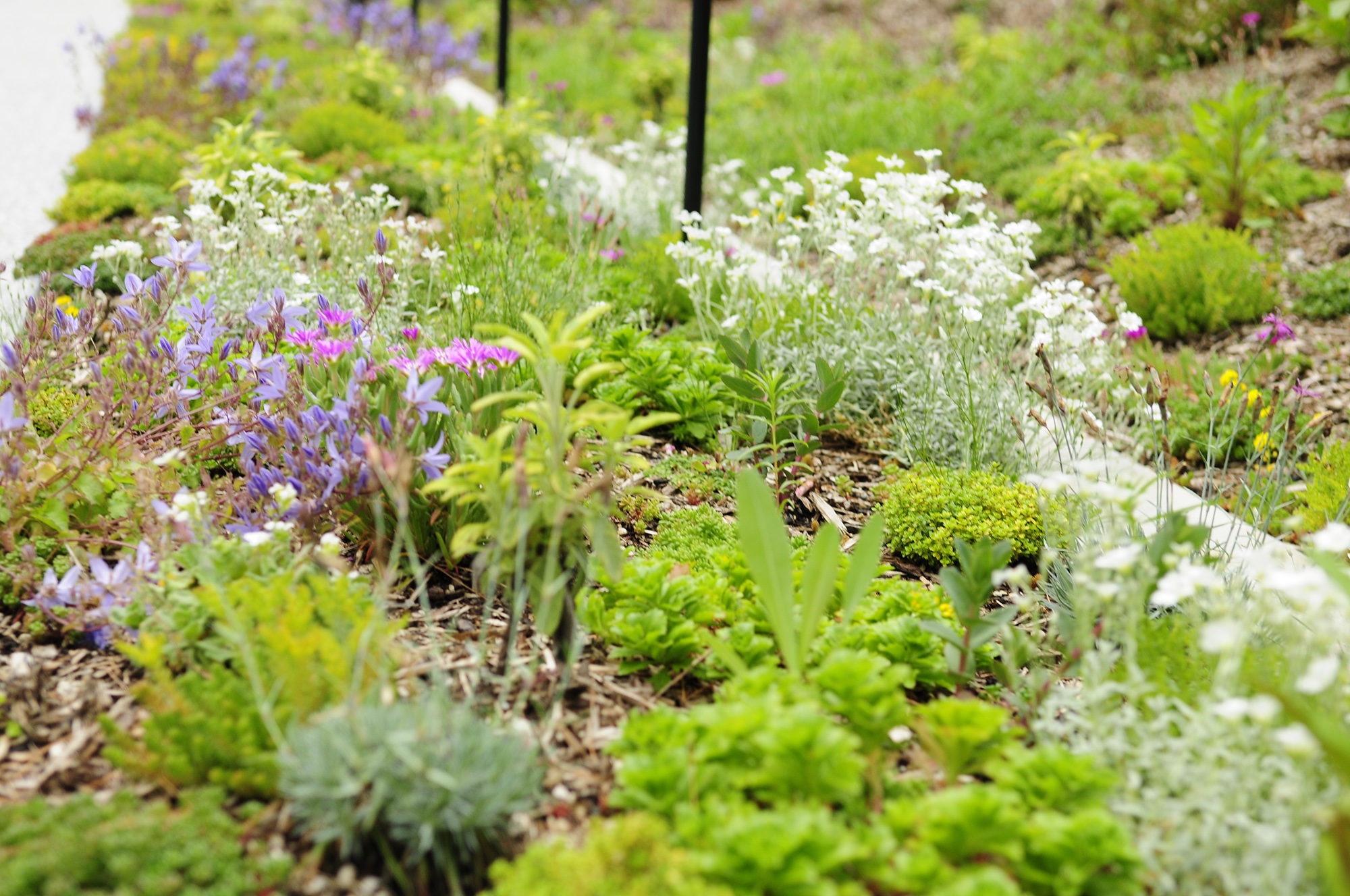This is the third in an ongoing series illustrating the relationship of Drawdown strategies to landscape architecture. For context, read the initial post here.
In the last post, I focused on a Drawdown topic, Refrigerant Management, that seemed out to be well outside of the scope of landscape architecture, to point out that we have some ‘unseen agency’ to impact larger changes in systems in ways we sometimes don’t expect. Today, I’m focusing on the opposite, what I feel is the one most immediately relevant strategy to our work: Green Roofs. As you can see from the Drawdown site, Green Roofs are ranked a lot lower on the scale, coming in at #73, however, they do have the potential to reduce CO2 by 0.77 gigatons by 2050.

As a landscape architect that has designed many green roofs, it’s heartening to see this on the list, as it shows an expanded and important aspect of our profession that moves from the site and started to investigate the potential for building-integrated landscape systems – as I have over the years referred to as Vegitecture. These transcend aesthetics and are not just seen as another material or landscape type, rather they engage in optimization of building systems, and by looking at flows of energy, water, waste through buildings, become fully integrated into the overall project. An example of this in is the First+Main building, which is a LEED Platinum project designed by GBD Architects, with the roof terrace that we developed at Greenworks, which complemented the sustainable strategies, such as open space, provided valuable user amenities, and gains efficiencies by employing irrigation that uses 100% harvested rainwater.

The body of research is immense that demonstrates the ability of green roofs to cool roof surfaces, provide insulation for buildings, and to reduce heat gain in the surrounding environment, makes them perfect for leveraging similar gains (energy efficiency, reduction of refrigerants) that were discussed in the previous post. Quoting the Drawdown site, in relation to regular roofs.
“Green roofs, in contrast, are veritable ecosystems in the sky. They may support a simple carpet of hearty, self-sufficient groundcover such as sedum; or they may sustain full-fledged gardens, parks, or farms. The soil and vegetation function as living insulation, moderating building temperatures year-round—cooler in summer, warmer in winter. Because the energy required for heating and air-conditioning is curbed, greenhouse gas emissions are lower, as are costs.”
The benefits come in all forms of rooftop greening, from the lightest and simplest extensive roofs (3-6″ growing media w/ sedums or other hardy ground covers) as well as hybrid semi-intensive roofs (like the BPA project below, ranging from 6-18″ of media with more diverse plantings) and more intensive roof gardens and terraces (as seen above). A common trend in all of the landscape strategies, which is also paramount in green roofs, is the ability to layer multiple benefits together. The list of benefits is huge, including stormwater management, reduced urban heat islands, building insulation, noise reduction, air pollution reduction, provision of usable space and biodiversity which supports wildlife habitat to name a few. That habitat potential was a big focus of the design for the Bonneville Power Administration building that I designed, in which we replaced hardscape plaza spaces with diverse vegetated undulating berms, integrating native and adapted species, including small shrubs and trees, which are beautiful and valuable ecologically.

The mechanism of climate mitigation with green roofs isn’t just about energy savings, but, like other landscape strategies, involves some additional sequestration using the plants and soils that are part of the design. While this is not as much as terrestrial landscapes that have larger woody materials, deeper soils, and trees – it is significant, and amendments of growing media using another Drawdown strategy, Biochar, can increase this capacity (and possibly improve green roof performance), and we can also take advantage of waste streams from Compost, or use roof waste in cycles of Perennial Biomass. More to come on all of these later.
Beyond the habitat and other values, there is another really interesting synergy between green roofs and another Drawdown strategy: Rooftop Solar. It is often perceived that solar and green roofs are an either/or choice, but there’s a valuable interaction between the cooling impacts. In reality, the combination of reduced temperature and less reflected heat that occurs through soils and plants, along with some evaporative cooling by the plants themselves, helps reduced overheating of the panels, keeping them at a temperature range that is more optimal. This has additional benefits of allowing the solar panels to generate more renewable electricity, which provides a further reduction in GHG emissions by being less reliant on fossil fuel energy. This was integrated into the Northwest Health building here in Portland, a retrofit project by Greenworks, which allowed the relationships of panels and green roof, with just a small un-vegetated area in the rain shadow, helping the panels perform well and still maximizing the amount of vegetated area.

Finally, another aspect of the research is that they are also including ‘cool roofs’ in with this strategy. These offer similar cooling benefits to green roofs using light colored roofing membranes, so are an important strategy to include when structure or cost is a limitation, but I’d disagree with the sentiment that they achieve ‘similar impacts’. The main difference in this case, much like using gray over green infrastructure, is that a cool roof only offers one function,
Drawdown mentions that both incentives and policies drive the implementation of green roofs, and there are many examples that have been on the books for years in Europe, and many new ones now in effect in North America. Cities like Toronto and Denver have mandated green roofs in certain areas and building types, and places like New York City and Washington DC, among others, have included things like tax abatement, expedited permitting, or other incentives. Locally, Portland has long had incentives that allow for more FAR in buildings, and even had a monetary incentive of $5 per square foot for qualifying projects. Last year, they took it to the next level, with a Green Roof requirement as part of the Central City 2035 Plan, which mandates that vegetated roofing for new construction over 20,000 square feet.
The growth of the green roof industry and the millions of square feet of vegetated roofing offers a key, landscape specific strategy for climate action, which, as outlined in Drawdown, can provide significant reduction in CO2 over the course of the next 30 years and beyond.
HEADER: Vegetation from First + Main – photo courtesy of GreenWorks

2 thoughts on “Daily Drawdown 3: Green Roofs”